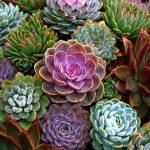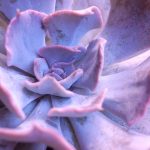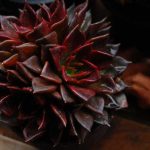Echeveria ‘Perle von Nurnberg’ is an exquisite succulent that captures attention effortlessly. Delve into this insightful guide by Rachel Garcia for expert tips on successfully cultivating and maintaining this stunning plant.
If you’re seeking sophistication in your choice of echeveria, look no further than the captivating Echeveria ‘Perle von Nurnberg’. Its elegantly shaped leaves form a perfect rosette, while its unique blue-gray and pink hues, with a hint of purple, create a mesmerizing color palette, topped with a delicate dusting of pruinose.
Originating from Germany in the 1930s through a hybridization by Alfred Gräser, this remarkable succulent is a cross between Echeveria gibbiflora ‘Metallica’ and Echeveria elegans. With its distinct charm, Echeveria ‘Perle von Nurnberg’ is a hybrid that continues to captivate enthusiasts worldwide.
Perfect for gardeners of all skill levels, this succulent species offers much to appreciate. Before you embark on the journey of growing this beauty, here’s everything you need to know.
Plant Overview
|
Plant Type
Succulent
Family
Crassulaceae
Genus
Echeveria |
Species
Echeveria ‘Perle von Nürnberg’
Exposure
Full sun to partial shade
Height
6″ |
Watering Requirements
Low |
Low
Succulent Mix
What is Echeveria Perle von Nurnberg?
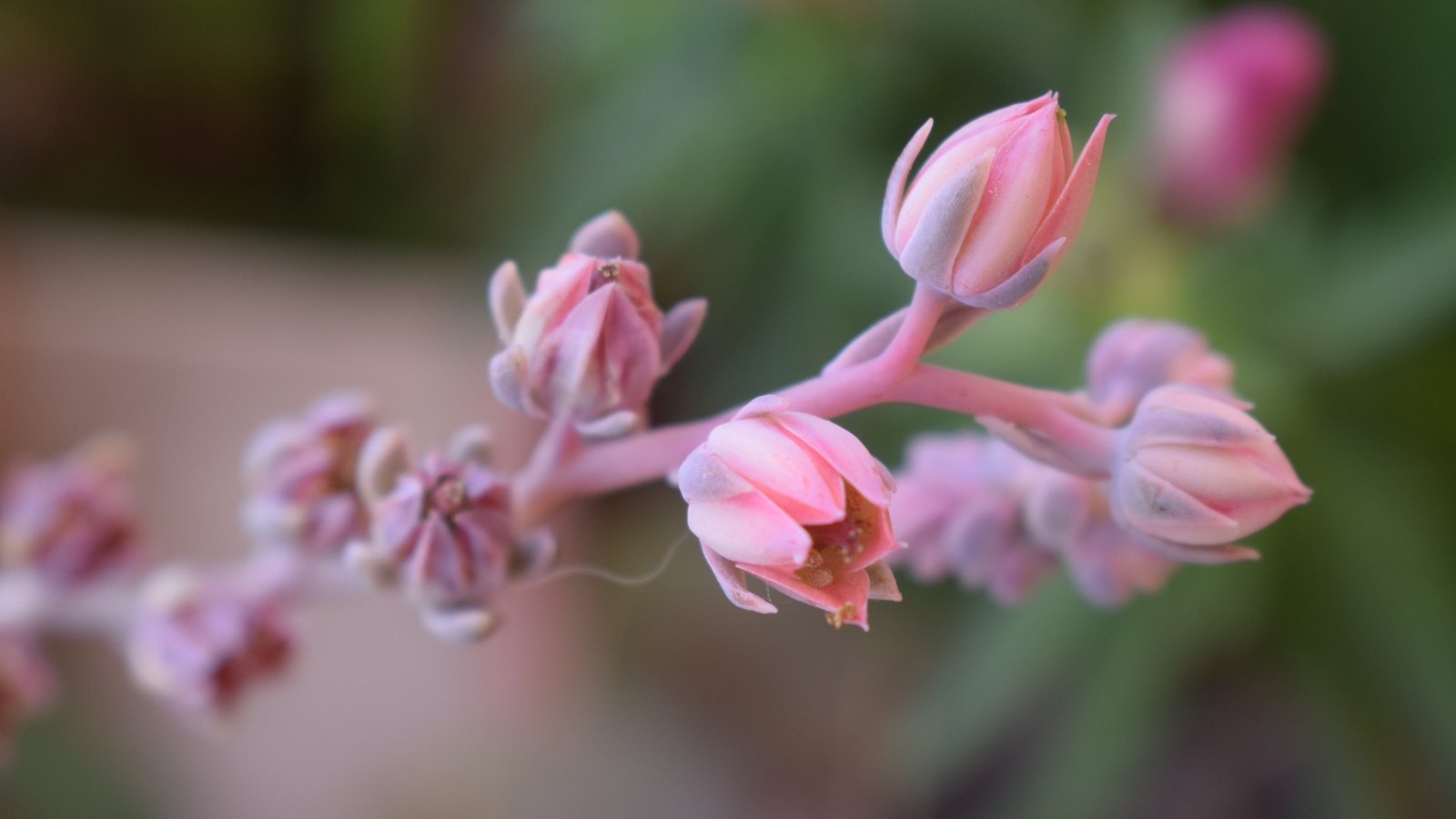

When it comes to Echeveria Perle von Nurnberg, the name translates to Pearl of Nurnberg. With pearly-looking leaves, this succulent truly lives up to its name. In the summer, it showcases vibrant pink and yellow flowers.
This succulent thrives best in USDA Zones 10-11, requiring ample sunlight throughout the year. Even when cultivated indoors, sufficient light remains essential for its growth.
Standing at under six inches tall, the Perle von Nurnberg suits compact spaces perfectly. Its popularity extends to floral arrangements and wedding bouquets, adding elegance to any setting.
Aside from the standard PVN variant, enthusiasts can also seek the unique ‘Rainbow’ Echeveria or variegated Perle von Nurnberg. This striking type displays the same colors but in striped patterns, boasting intense hues compared to the classic PVN.
Planting
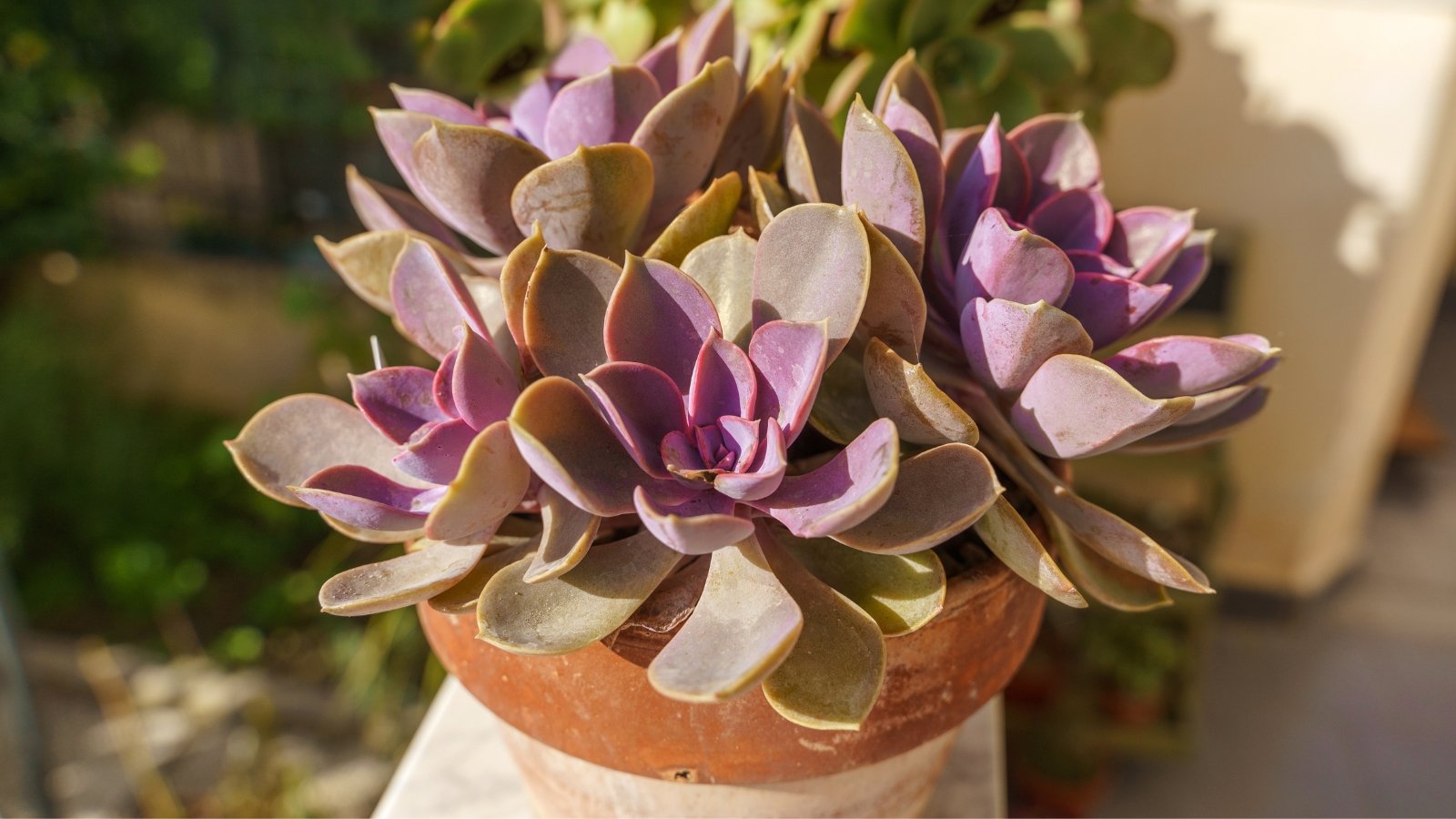

To successfully plant Echeveria ‘Perle von Nurnberg’, follow these straightforward steps to ensure lush growth and vivid coloration.
Begin by selecting a pot with proper drainage for potted plants or a spot outside where water doesn’t accumulate. This succulent thrives in well-draining soil, typically favoring terra-cotta pots.
Fill the chosen container with a succulent potting mix or enhance the soil with coarse sand or perlite to improve drainage. Gently remove the echeveria from its current pot and transfer it to the new one, filling any gaps with more soil mix.
Delay watering for a few days to allow the roots to adjust to their new environment.
How to Grow
Elegance aside, growing and maintaining the Pearl of Nurnberg proves to be straightforward. Here are some pointers for successful cultivation.
Light
For optimal growth, the Echeveria ‘Perle von Nurnberg’ requires full to partial sun, with a preference for at least four hours of sunlight daily. The plant’s hues are more pronounced when consistently exposed to direct sunlight.
If your Echeveria is indoors, position it near a south-facing window and rotate it regularly for even lighting. In low-light conditions, consider using a grow light to supplement.
Water
To mimic its natural environment, give the ‘Perle von Nurnberg’ succulent a thorough watering followed by complete soil dryness. For a more authentic drought experience, allow the plant to sit in dry soil before the next watering cycle.
During winter, reduce watering significantly as the plant’s soil dries slower indoors. Always check for moisture levels before the next watering session.
Soil
Adequate soil drainage is crucial to prevent root rot and fungal issues in your Pearl of Nurnberg. Opt for gritty, well-draining soil to keep the plant healthy.
An ideal soil mix includes a blend of regular potting soil with additives like perlite, sand, coconut coir, or shredded bark. Aim for a balanced one-to-one ratio and test the drainage before planting.
Temperature & Humidity
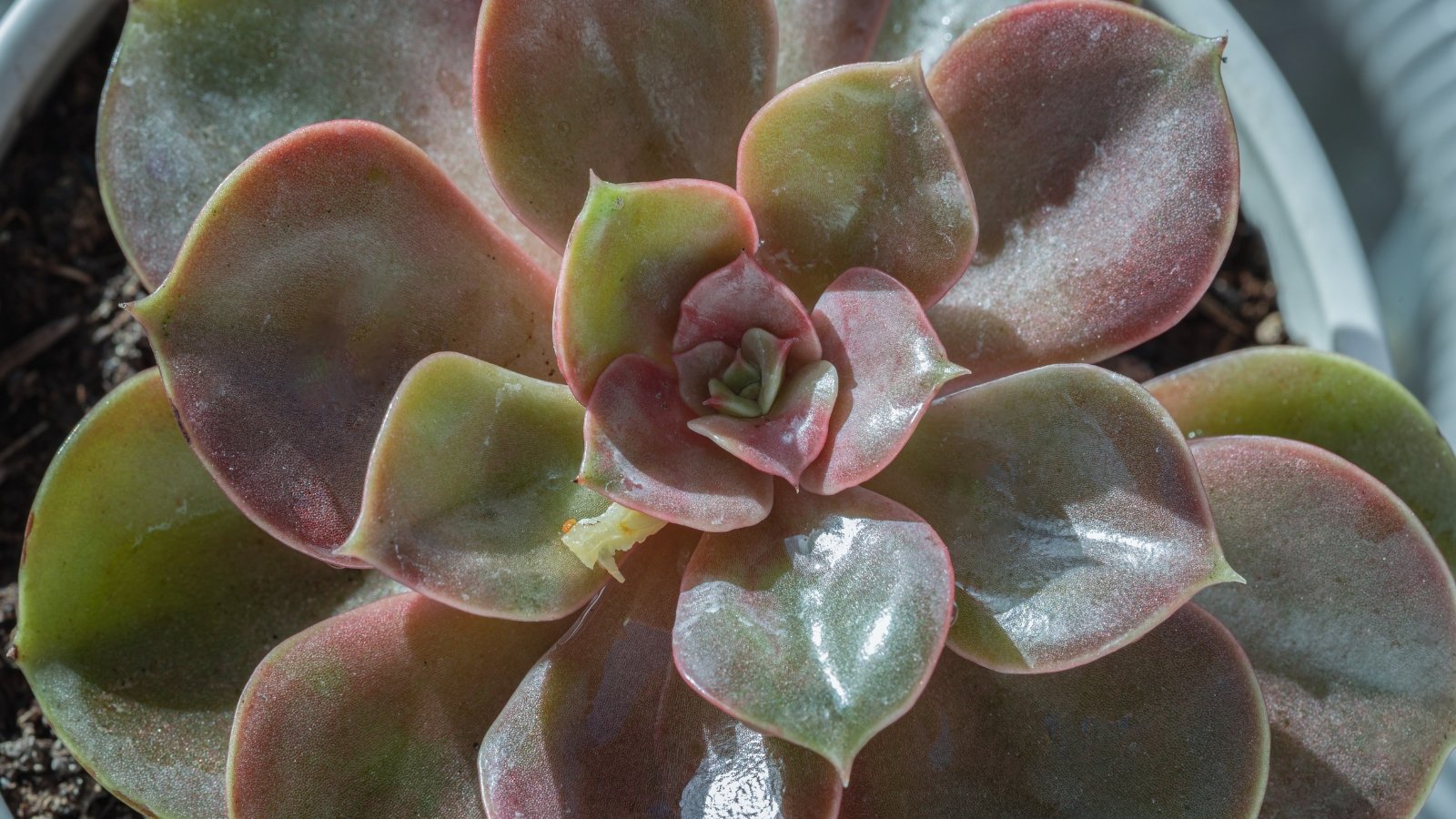

For those residing north of Zone 10, PVN can struggle in the cold. The plant does not handle frost well, so it’s best to maintain temperatures above freezing, ideally above 40°F (4°C).
These succulents thrive in dry air conditions but can adapt to various environments. Keep an eye out for fungal issues like mildew, particularly in high-humidity areas.
Fertilizing
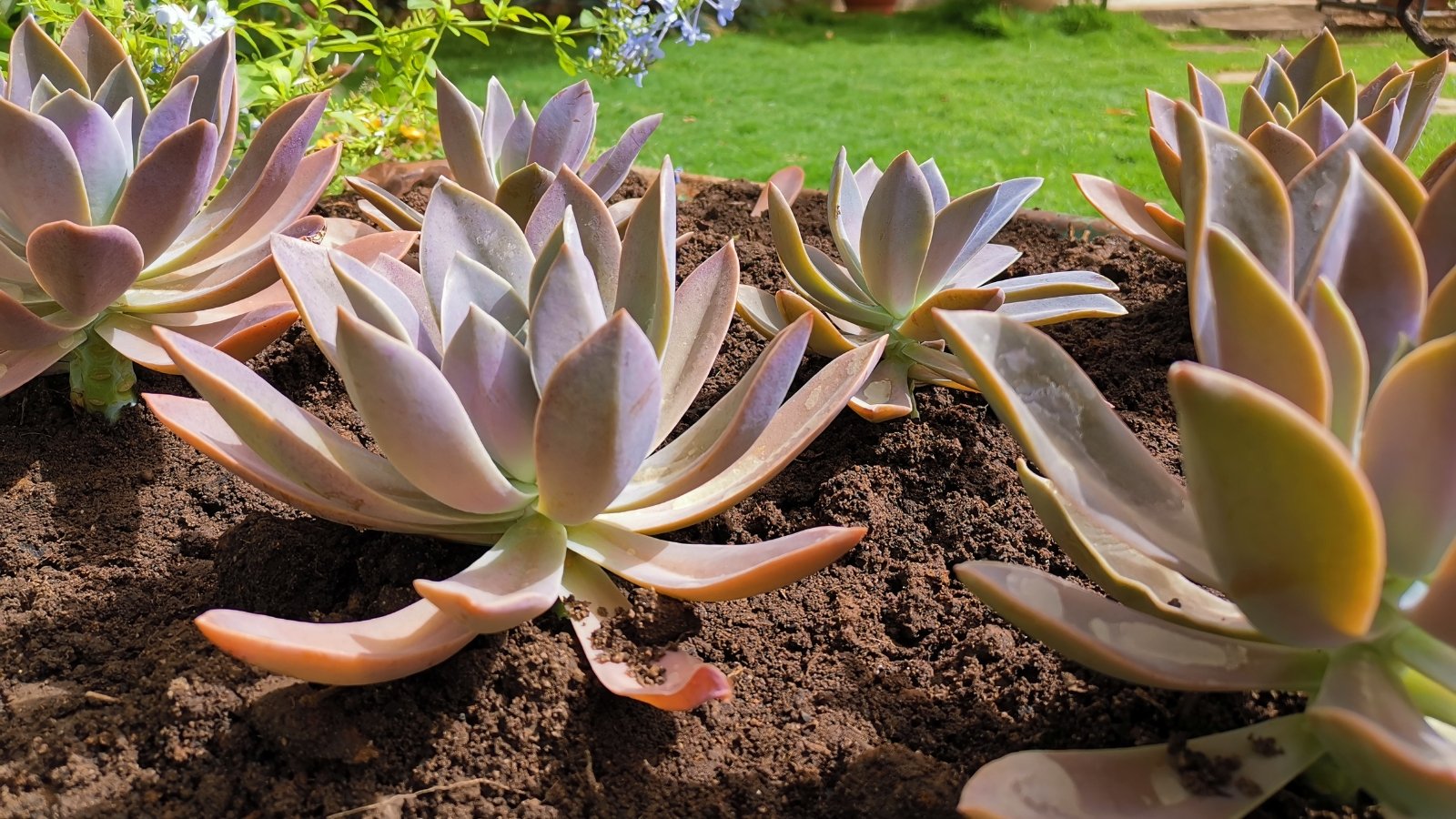

Fertilizing is not a top priority for this plant when planted in suitable soil. However, during summer, consider providing a boost with succulent or cactus fertilizer. Opt for a liquid, balanced, or low-nitrogen fertilizer.
Start by applying the fertilizer at half strength initially, increasing the amount gradually over the following weeks if needed. Avoid exceeding the recommended dosage mentioned on the product packaging. Refrain from fertilizing during the plant’s dormant phase in winter.
Maintenance
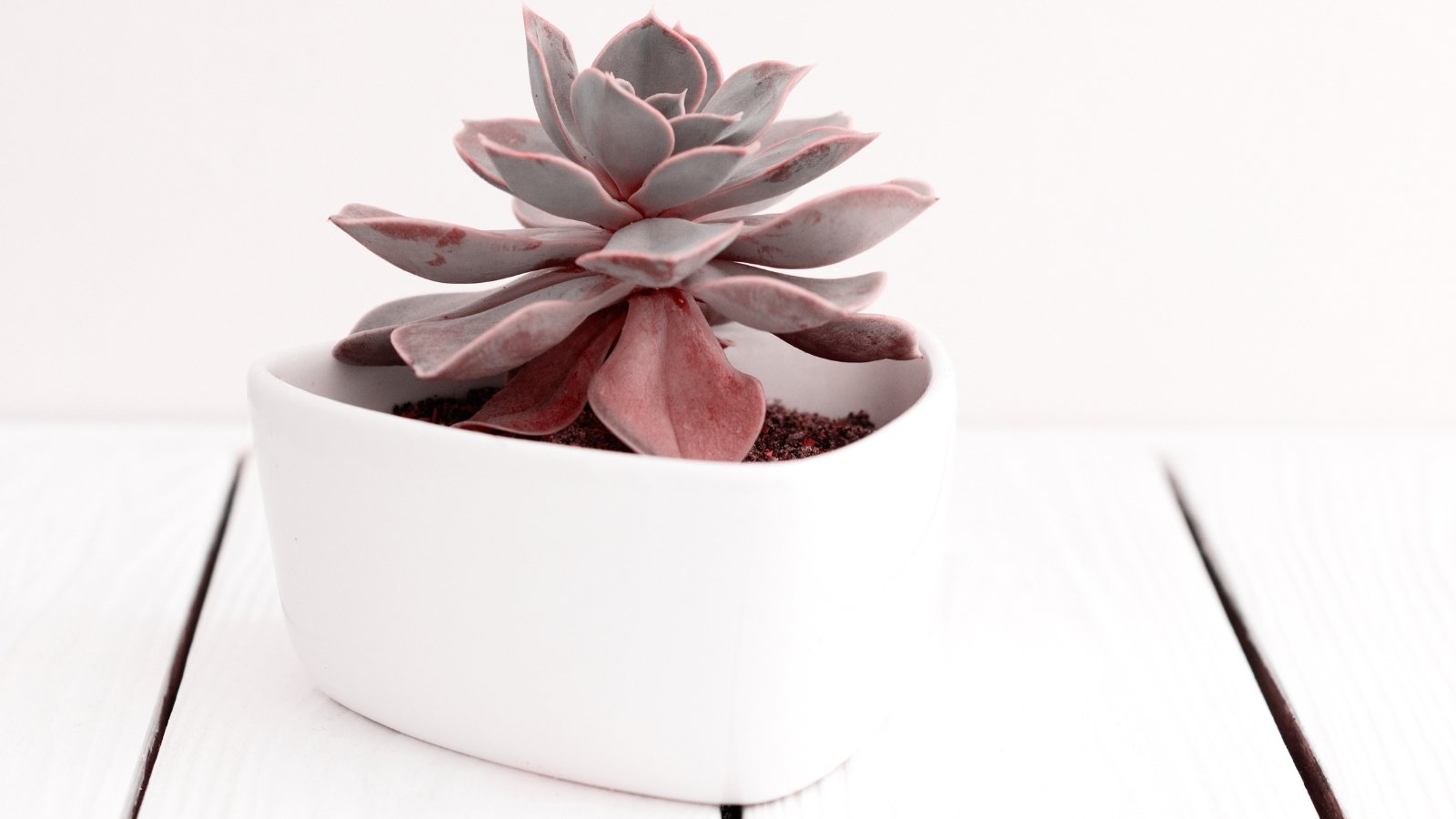

Regular repotting, every few years, is essential for Pearl of Nurnberg to maintain soil aeration. Undertake this task during summer when the soil is dry. You may transfer it to a new container or refresh the soil in the existing one.
Upon removing the succulent from the ground, delicately cleanse the roots off the soil and check for any underground issues like rot. After transplanting it into fresh soil, refrain from watering for a few days to allow the roots to acclimatize and repair any damage.
Pruning is only necessary when dealing with dead leaves on your Perle von Nurnberg. While these leaves typically shed on their own, you can manually remove them. Avoid discarding the fallen leaves in the pot as mealybugs tend to hide there.
Propagation
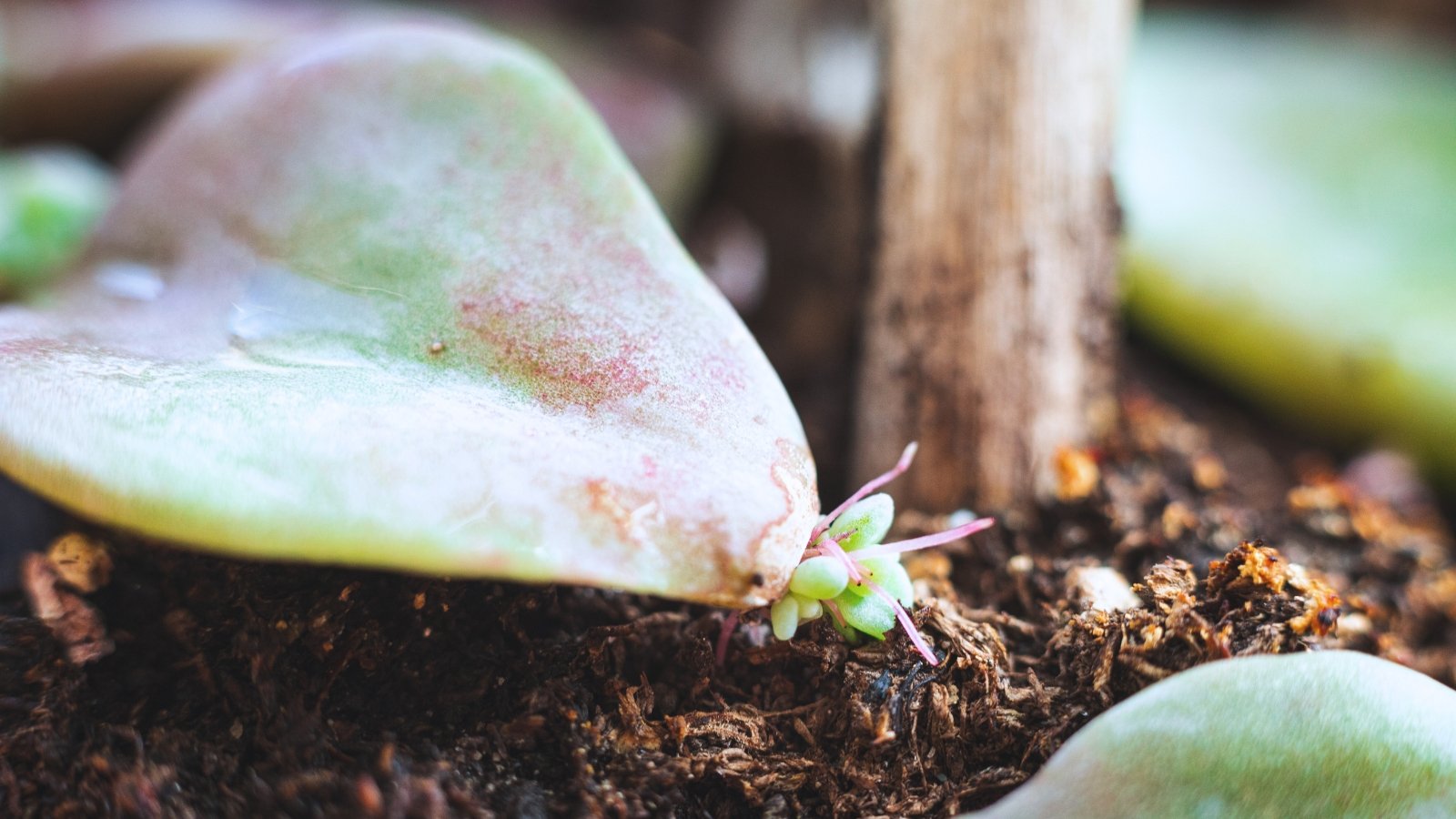
For anyone interested in expanding their succulent collection, Echeverias offer a straightforward process for propagation. Once you grasp the techniques involved, you can effortlessly multiply your Pearl of Nurnberg specimens.
Leaf Cuttings
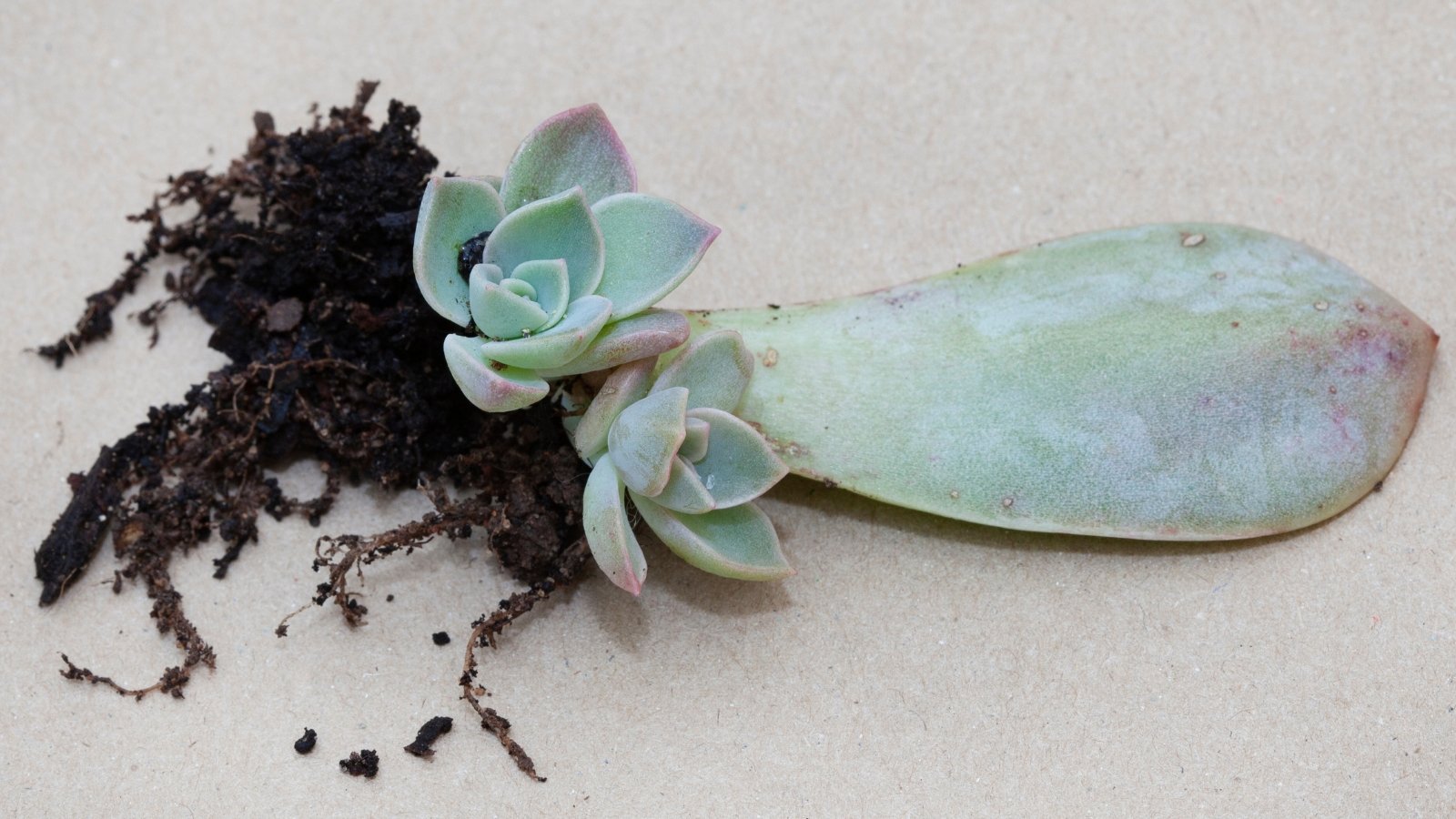
The method of leaf cuttings involves a simple process of gently twisting the leaf from the stem, ensuring a clean separation to facilitate root development. Maintain the leaf in a dry state for a couple of days before placing it on well-draining soil. Regular misting and moisture control are key until new roots emerge, at which point normal watering practices can resume.
Stem Cuttings
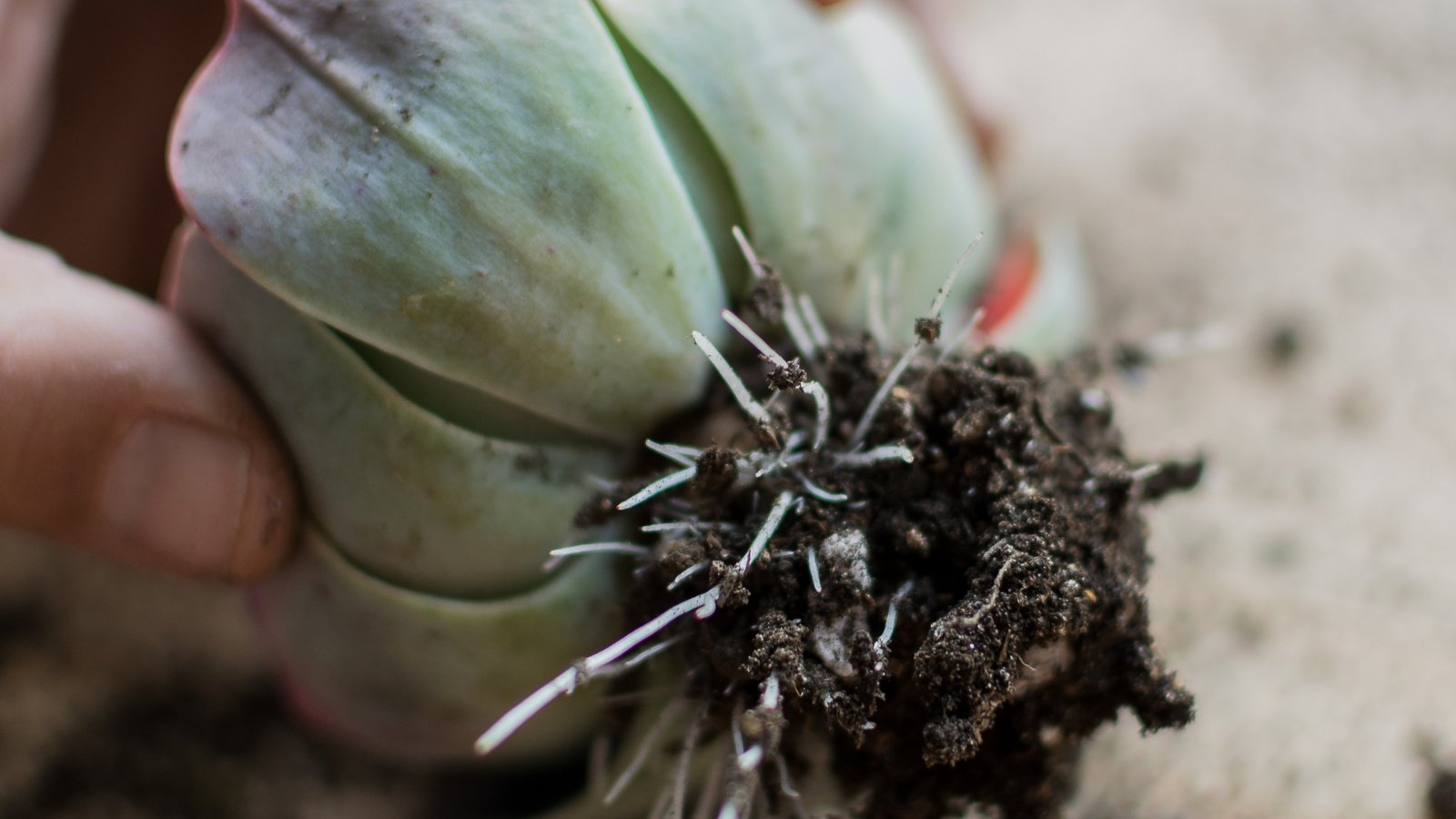
Similar to leaf cuttings, stem cuttings rely on a comparable approach for successful propagation. By cutting the stem below the rosette and allowing it to dry, you can then position it in the soil, regularly misting it until root formation occurs. A gentle tug can reveal root growth, signifying a successful propagation process.
Echeveria ‘Pearl von Nurnberg’ occasionally produces offsets, which can be propagated similarly to stem cuttings. Alternatively, encouraging root growth on the offset before division can also lead to successful propagation.
Common Problems
Gardening enthusiasts must vigilantly address common issues in succulent care to maintain optimal plant health. Timely detection and proactive solutions are vital in safeguarding the well-being of your succulents.
Overwatering
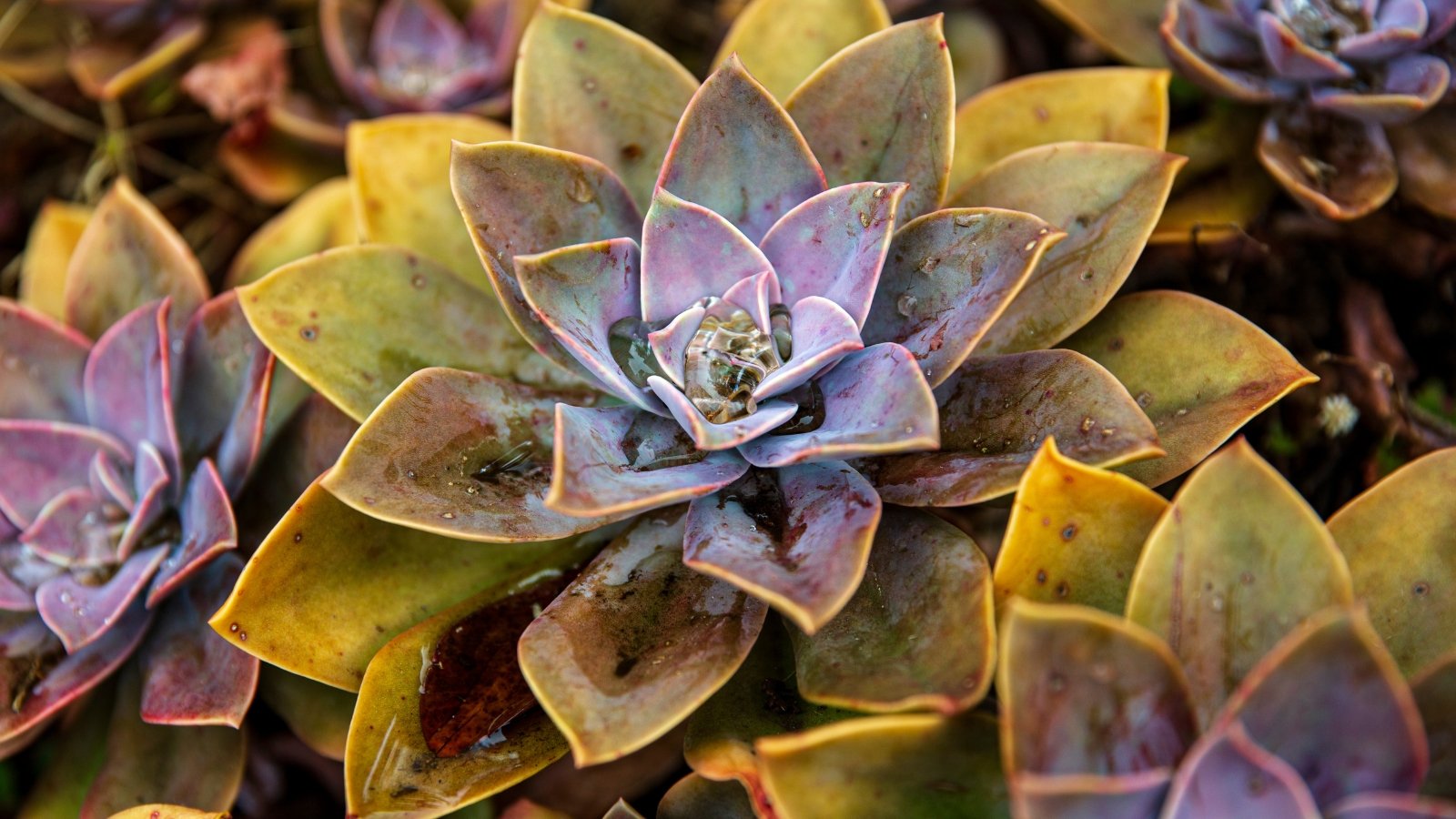

If you’re not careful with your echeveria, overwatering can spell disaster for this succulent, leading to a quicker demise compared to underwatering.
Signs of overwatering manifest in yellow, mushy leaves prone to falling. To counteract this, consider repotting your Perle von Nurnberg in fresh, dry soil and allow it to dry out before adjusting your watering routine.
Underwatering
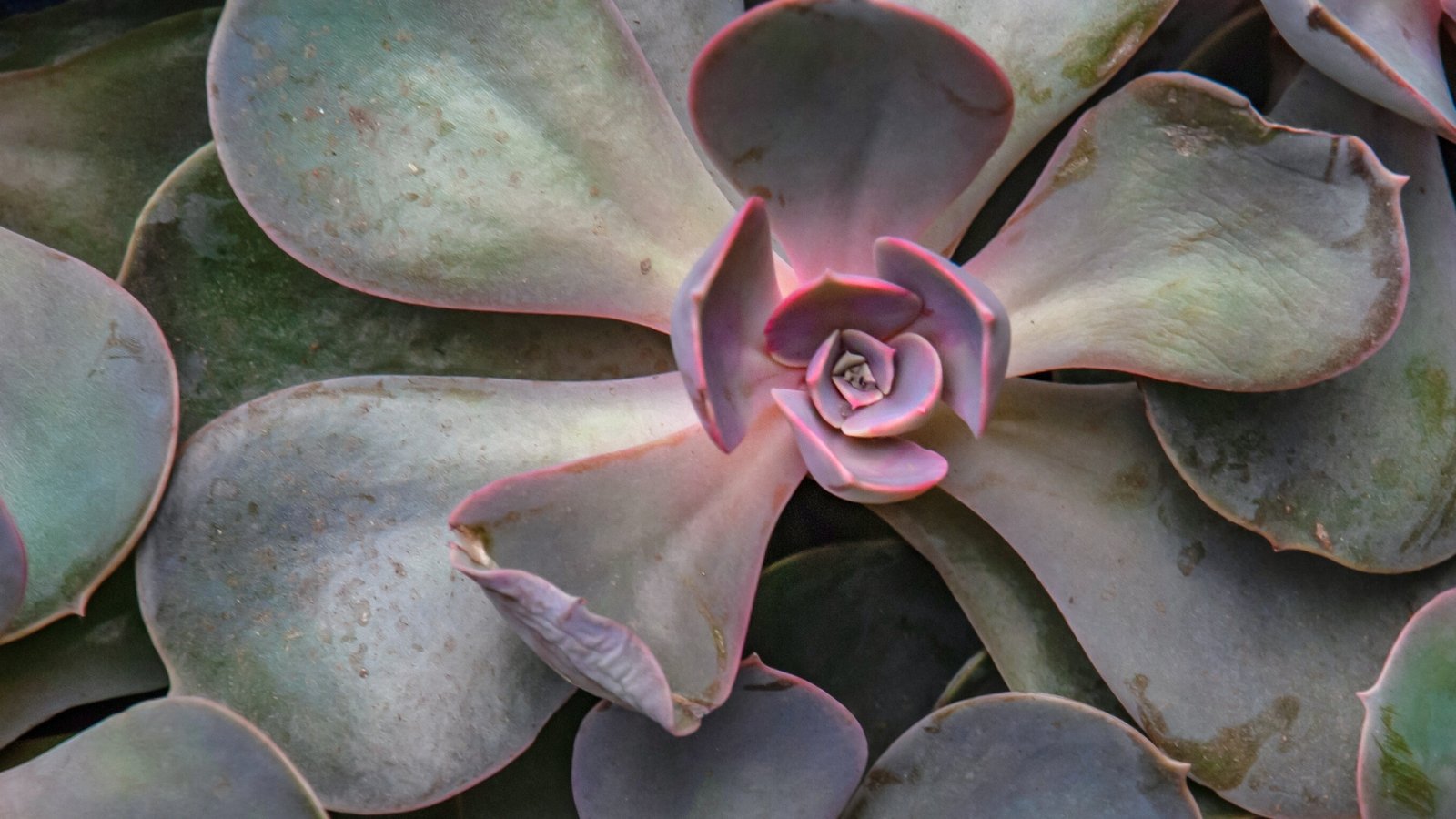

Underwatering can also harm your PVN, but it’s a more manageable issue. A thorough watering usually helps revive the plant. Look out for shriveled leaves and wilting when this occurs.
Etiolation
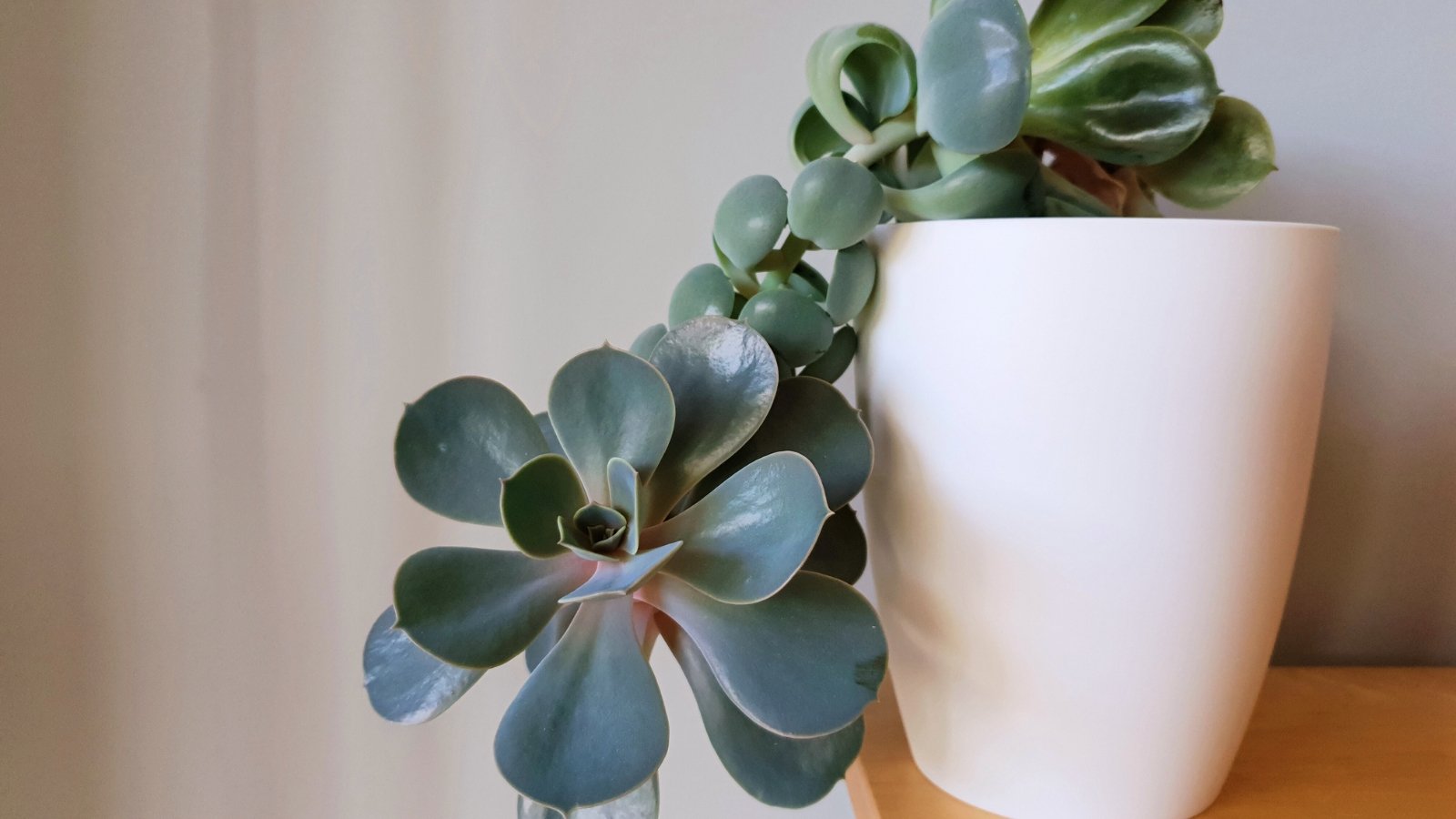

Watch out for etiolation in your succulents, an issue easily preventable with adequate sunlight. When not exposed to enough sunlight, the plant elongates in search of it.
If you don’t position your Pearl of Nurnberg in a well-lit spot, it may become stretched and weak.
Once a succulent is etiolated, shrinking it back down is not possible. Consider cutting the top and propagating through stem cuttings for another chance at proper Perle von Nurnberg growth.
Pests
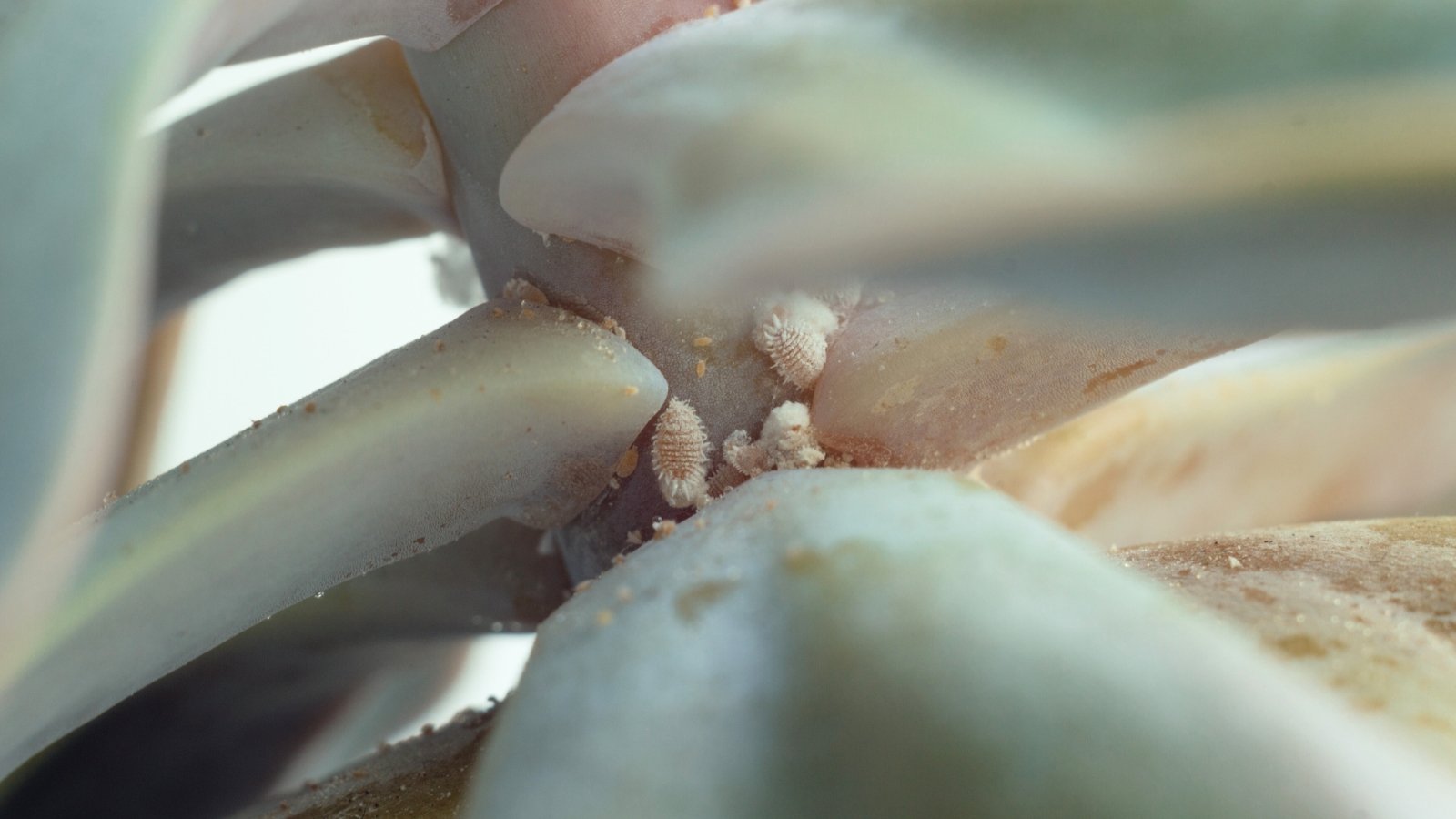

Mealybugs, attracted to the honeydew-like sap of your Perle von Nurnberg, can be a nuisance for your echeveria. These small insects infest plants, creating cottony nests and secreting honeydew that lures ants. You can deter mealybugs by maintaining a dry environment for your succulent and using neem oil as a weekly spray.
To eliminate mealybug infestations, consider using insecticidal soap. Gently wash the leaves with it, or target individual bugs by dabbing them with a cotton swab soaked in 70% or lower concentration rubbing alcohol.
Aphids, though less common, pose a threat to succulents by feeding on plant juices similar to mealybugs. If untreated, aphids can lead to the demise of your plant. Safeguard your Perle von Nurnberg by applying diatomaceous earth to the soil and neem oil to the succulent. For existing infestations, resort to insecticidal soap for control.
Vine weevils, not restricted to vines, are flightless black beetles that chew through leaves causing wilting and yellowing. Prevent these pests by using diatomaceous earth, as they are often resistant to sprays. Manual removal of vine weevils is the best solution for infestations, given their nocturnal behavior which makes them easier to locate at night.
Root rot, a common succulent disease resulting from excessive moisture exposure, can introduce bacterial infections. Avoid overwatering and opt for well-draining soil to prevent this issue. Regularly inspect your Echeveria ‘Perle von Nurnberg’ for signs of rot, characterized by brown or black mushy sections starting in the roots and spreading. Trim infected parts, let the succulent dry out for a few days, then repot in fresh, dry soil.
If extensive trimming is necessary due to rot, consider propagating the healthy parts of the plant by removing damaged sections. Use fresh soil for propagating cuttings for optimal growth.
Frequently Asked Questions
Is Perle von Nurnberg toxic?
No, this succulent is pet and person friendly!
Why are there brown spots on my Pearl of Nurnberg?
This is likely sunburn. Move your plant away from direct heat to prevent further damage.
Final Thoughts
Echeveria ‘Perle von Nurnberg’, a striking and undemanding addition to any succulent collection, is sure to make a statement wherever it’s planted.


